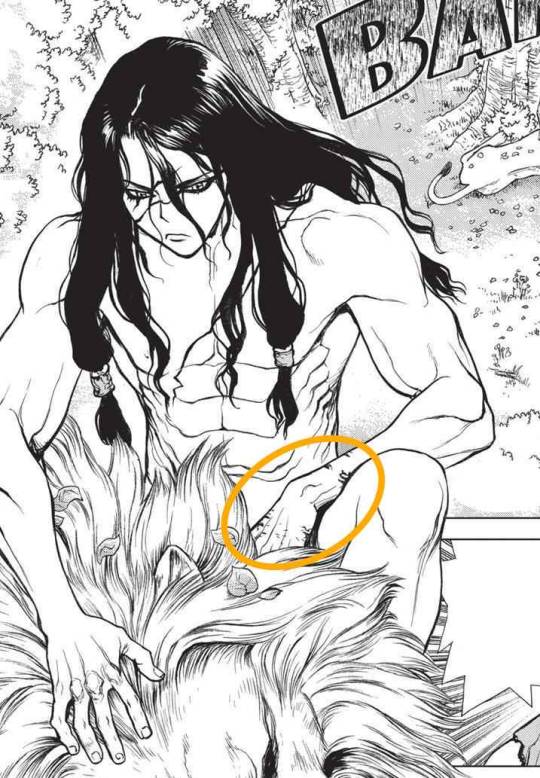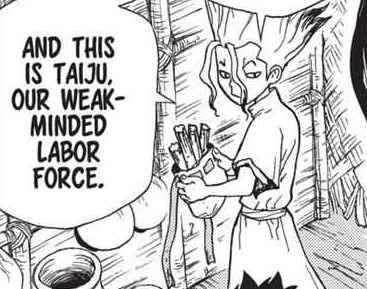#saponified
Explore tagged Tumblr posts
Text


1 note
·
View note
Text

Eric Andre cheering.jpg
2 notes
·
View notes
Note
✨ send me a word and i’ll tell you the first song to come to mind! ✨
Saponify
you know this has absolutely stumped me. i've been thinking about it for like a day now even googling the definition and trying to go off of words in that and still i have had nothing if this is an ask game then brother (gn) you've won it
#love letters#i have to say it is an excellent word#nice to say#saponifier#if you have any saponify song recs please do share i'm fully intrigued
4 notes
·
View notes
Text
i fucking HATE it when people who have no idea how hard it is to actually function in your reality are like "i know its hard but youre doing great!" like no you dont fucking know, actually, because you arent me and you dont have anything in common with me in this respect. i also didnt ask for your fucking feedback! if i dont think its good enough i dont give a shit what anyone else has to say about my effort.
#ive realised i actually dont know how to take compliments on my work anymore and like is that toxic perfectionism? probably#am i going to change? no.#like theyre MY learning disabilities and coping strategies. i get to choose when im satisfied with my own work.#if you dont actually get how fucking difficult it is for me you dont get to tell me when its good enough#whether it meets your own standards or not. fuck off#''youre doing great! the interview was so good youre so well spoken'' i dont REMEMBER most of it and all i DO remember was sounding STUPID#i dont CARE if YOU think it was good. who cares what you fucking think! leave me out of it. i dont want your opinion.#i dont think im well spoken i think i sound like my brains being slowly saponified#i think i sound like a fucking 4th grader.#''i know its challenging but they said you did great'' didnt ask. you dont get to say you ''know'' its challenging.#you have no fucking idea what youre talking about. fuckhead.#txt
4 notes
·
View notes
Text
#randomartmaker rambles#i think the og was bacon actually but#saponify has been on my mind#so soap it is!#has anyone done this?#polls#tumblr polls#tumblr poll#poll#oh my god i have polls#and.#unlimited games but no games
1 note
·
View note
Text
this is i want to be bog mummy erasure. i want to be a soap mummy. the next otzi the iceman. the next Soap Lady
1) @karin848 I love you for sending me the polls to use 2) I can only edit them on mobile. Wild.
This is NOT about whether you'd like to be an organ doner/anything BEFORE the actual burial/processing of the body. This is only about how you would like your body processed after death (ie final resting situation).
2K notes
·
View notes
Text
I'm going to saponify you.
73 notes
·
View notes
Text
The other funny thing about the caustic soap brick post is all the people being like 'oh that's a good way to get rid of a body' and it's just super duper NOT. like you'd end up with a horrid, pungent burning smell, a lot of sludge, and unevenly saponified body fat. Not to mention the bones would still be extremely there. How much lye do you people think it takes to dissolve an entire body
11 notes
·
View notes
Text
Chapter 4 Trivia
Tsukasa's stone-cold goals are revealed.
Tsukasa's still got some lion blood on his hand from the punch he delivered in the last chapter.


Because lions have to be stronger than their prey, they're full of muscle and don't have a lot of fat, making their meat tough. Because of the lack of connective tissue and fat to soften the meat through traditional methods, the best way to do it is slowly over a low temperature which prevents the meat overcooking while allowing the connective tissue to break down and soften. Recommendations for cooking lion meat say 57°C over 24 hours. After that, it apparently tastes like pork, but richer.

(I couldn't find any sources on the meat smelling or tasting like ammonia, I'm forced to assume it's a side effect of their territory-marking urine?)
Normally it takes 6-8 weeks to make leather out of skin, but here Tsukasa is wearing it immediately and probably even before the body's become cold, judging by Taiju carrying Yuzuriha's statue to the base in the next panel. This is absolutely disgusting. Don't do this please.


Here we have proof Senku switches out his pouches based on what he needs. What's actually in them is anyone's guess though!

Smoking food works for several reasons. It dries the food (preventing fungal/bacterial growth), the smoke keeps insects away during the process, and the smoke itself imparts preservative and antimicrobial compounds such as the aldehydes Senku mentions. (Too much is toxic though!)

Interesting little habit you have there, Senku...

According to Senku, Tsukasa's skin is extremely pale. I'm not sure if this means he's got Snow White's complexion, or if Senku and Taiju are by comparison very tanned from working outside all day.

Tsukasa may have deemed himself the fighter, but he's no meathead! Based off his thoughtful comments, it looks like Tsukasa is quite scientifically knowledgeable himself, just not as much as Senku.


Adding lime (calcium carbonate) to soil reduces its acidity. Most plants prefer a pH of 6-7.5, which is neutral to slightly acidic. Obviously adding lime to already alkaline soil will make it even more alkaline, so you should test your soil first. Some plants like the acidity!

Heating lime to over 900°C releases CO2 and forms calcium oxide. Adding water and sand to it creates mortar, a substance that hardens by absorbing CO2 from the atmosphere and turning it back into calcium carbonate.
Fun fact: you can use the carbon in mortar for carbon dating!

To make soap, you need a fat (vegetable oil, bacon grease) and a base (lye, wood ash, lime). The goal is to saponify the fat. In modern soaps, calcium carbonate is added to bulk up the product and act as a mild abrasive.

Taiju is a very good friend for Senku because he obviously pays good attention and has a good memory. That is all.
He's just not that great for subtlety or negotiations...

Legally, "disfigurement" means to cause permanent change in a person's body, particularly by leaving visible scars which affect a person's appearance. We don't see any of that on Tsukasa, so did they heal? Was he fighting with broken fingers pre-petrification? What happened?

Freshly broken stone parts are colored in white. Does this mean as long as the stone is still white/unblemished, the pieces can be recombined?

Haha yeah it would be a shame if an evil dictator was woken up...

I still don't understand why Tsukasa skinned the lion where it dropped instead of bringing it back with them if they were going to eat the meat anyway...
31 notes
·
View notes
Text
Experiments In Early Victorian Skincare: Shaving Soap, Part One


- And how does it feel, not being fetched for drops nor drawers? - Miserable, sir. That is my job you are shaving away. (AMC's The Terror, s01e07, "Horrible From Supper")
(Crossposted to Wordpress as usual)
We have some great period resources describing contemporary techniques for shaving and grooming, and they shed a little light on how landsmen, at least, were taking care of their facial hair. (If you're only interested in maritime personal care, this post gets a bit into the weeds on terrestrial soap manufacture, so be warned.) From The gentleman's companion to the toilet, or a treatise on shaving, credited to "a London hair-dresser" in 1844:
There are many soaps which are puffed off as "the best article manufactured for shaving" -- a "beautiful preparation for softening the beard," &c. &c.; but some of them are utterly worthless. All soaps are to be avoided which contain any considerable portion of alkalie; they make a light frothy lather that will not stand on the face, and they will much annoy you by those irritating pains, which are frequently felt after shaving with a bad razor. The soap which I have invariably found to be the best is Naples soap; it produces a beautifully mild creamy lather that will soften the beard, and will render shaving an agreeable operation, and is best calculated to allay those smarting sensations which an indifferent razor produces on a tender skin. There is a great deal of white honey used in the manufacture of Naples soap, and I need not say that there is nothing of a more mild and soothing nature.
Writing in the tail end of the previous century, Benjamin Kingsbury says exactly the opposite in his Treatise On Razors:
[...] Naples soap, so much admired by some persons, on account of the strength of it’s lather, is extremely defective. Of all the shaving soaps in present use, there is not one whose component parts are so irritating and injurious as the soap which is called by this name. It is the most caustic, and, of course, the most destructive to the skin, of all soaps and, in truth, to the production of a needless quantity of lather from a small portion of it, the soundness of the skin of the person using it is completely, and necessarily, sacrificed. [...] the best soap for the purpose of shaving which I have yet made, and which I always use, is the Olive-Soap, composed, in great part, of olive oil, and uniting the advantage of a durable lather with the power of softening and healing, rather than irritating, the skin of the person using it.
(What a drama queen.) Great, cool, but wtf is Naples soap? Thomas Webster's 1844 Encyclopaedia of Domestic Economy describes it as a "strong soft soap, scented; it comes to us in pots. In this era it's still an imported good, so recipes for imitation Naples soaps appear in contemporary books aimed at individual household consumers rather than commercial soapmakers. (Accordingly, these recipes generally seem to involve re-milling or otherwise rebatching existing soaps to add fragrance or combine the qualities of component commercially-available soaps.) Particularly among these imitation recipes, authentic Naples soap seems to be associated with the fragrances of rhodium, ambergris, and musk.

(from the 1844 Illustrated London News, Vol 4, Issue 95. Curious about the disreputable inferior-quality soaps touched on here!)
An 1835 chemical analysis suggests at least one variety used mutton fat as a base fat and potash as its saponifying agent, which is in line with what our London hair-dresser says about lye soaps' insufficient lather. (The existence of this analysis really amuses me -- it seems like people in the US and UK were curious about what really went into this particular import.)
From William Brande's 1848 Manual of Chemistry:
The soaps of potassa are distinguished from those of soda by remaining soft; common soft soap is frequently made with fish oil. Naples soap is a perfumed potassa soap made with lard.
Interestingly, I'm not seeing anyone else mention the "white honey" that our London hair-dresser attributes to the ingredients list here, but honey is a pretty common additive in natural soapmaking, so I'm not about to write it off entirely.
Soft Naples soap isn't the only soap used for shaving in this era -- any number of toilet soaps seem to have been in use, and at least some of these used regular soda lye. Rather than jump right in with potash lye, I wanted to make one of these first.
Shaving Soaps: Take One
Modern home soapmakers have a huge range of tools available to them that even commercial soap manufacturers of the 1840s did not -- digital scales, laser thermometers, Crockpots, electric stoves -- so in this case rather than reconstructing period methods I'm going to try and translate those techniques to a modern toolset.
First, I made a batch of tallow shaving soaps with soda lye/sodium hydroxide -- apart from the use of tallow, this was a thoroughly modern recipe, incorporating a range of vegetable oils to fine-tune the consistency and conditioning powers of the resulting bar. I used equal parts coconut oil and beef tallow, supplemented with sunflower oil, castor oil, olive oil pomace, and unrefined cocoa butter; the only other notable ingredient was powdered clay, both for cleansing powers and increased slip. (You could use white kaolin clay or off-white bentonite clay for a lighter-colored bar; I worked with French green clay because that's what I have on hand most of the time, so my bars ended up a pretty attractive sage-green color. Some people claim that the inclusion of clay dulls their razor blades, but I don’t know that I’m using any given razor blade for long enough for that to matter, and I didn't find it to be a problem when using.)
[Here's where I'd put a photo of these bars in the mold... IF I HAD ONE... so you'll have to settle for this store link.]
What's this bar like to shave with? I'm going to be honest: it's really nice, to the point where I'm considering using it as basically a leave-on mask. I shave with a safety razor and occasionally a wet-dry electric razor, but I don't use a brush to lather up, so I just used my hands with this bar on damp skin; there wasn't a really fluffy voluminous lather, but it made for a really sleek and easy-to-navigate shaving surface and a pretty damn close shave without much friction. The clay component adds a little satisfying tooth to the shaving experience while leaving my face feeling really clean and non-greasy after.
So clearly I like it ,and I've gotten nice feedback from others. But it's not a Naples soap. It's not made with potash lye. What might a more authentic Naples shaving soap look like? If there are other modern takes on a soap like this, I'm having a hell of a time finding them under the search engine optimized-shadow of the Florida-based Naples Soap Company.
What makes a Naples soap?
So to review we're looking for: soft soap, scented soap, animal fat base, and critically, that potash lye mentioned earlier. Potassium hydroxide is an entirely new beast to me -- in soapmaking, it can be used alone or in tandem with sodium hydroxide to create a softer soap, up to and including straight-up liquid soaps. I felt like a horse's ass putting together that, yeah, "potash" really does just come from "pot ash", and "potassium" is just halfassed Latin for the same. If your mental image of old-timey soap making is Almanzo Wilder in the Little House books you're on the right track -- making soft soap was an annual thing for many homesteaders, and the potash was sourced from the previous year's collection of wood ashes.The resulting jelly-like soap got stored in a barrel and doled out as needed. Common salt or table salt could be added to the soaping process for hardness, but in a Colonial American or homesteading context I can't imagine that was always economically feasible.
The barrel approach is in line with what I'm seeing modern soapmakers describe with soft olive oil-based Castile soaps -- you can dilute your soap goo right out of the gate to the consistency of a Dr. Bronner's-type liquid soap (though Dr. Bronner's 18-in-1 soaps are made with coconut and palm kernel oil to supplement their olive oil content these days) but more water means more potential for spoilage, so keeping around a jar of goo and diluting it as needed is a more shelf-stable option.
Period soap recipes are made at scale -- measuring ingredients in pounds, not ounces, and in particular testing the strength of lye solutions by measuring their density against that of a fresh hen's egg. (This method apparently goes back to the sixteenth century and can be used as a rough-and-ready test for a number of different solutions -- for more, check out this post by Homestead Laboratory or this historical overview of the egg test's use in brewing and mead-making from A Booke Of Secretes.
I'm not making my own lye, whether soda or potash, and in fact I prefer to fuck around with lye as little as possible. (Over the course of this project I had the revelation that this is 100% because of the chemical burn scene in the movie Fight Club.) But it behooves me to get familiar with potash lye soaping.

(from The Critic, Vol. XIII, No. 322, 1854)
Shaving Soaps: Preparing For Take Two
So what am I making for my second round here? Instead of a soap cut from a bar or popped out of a mold, I want to make the equivalent of a soap in a pot -- something soft-textured that can be lathered in its container but that's also portable. The descriptions of shaving soap as "soft" don't do me a lot of good -- *how* soft are we talking? Are we talking soft like jelly, like the OG Colonial-style soft soap made with exclusively potash, or just not rock-hard? It's possible to strike a balance between rock-hard and goo-soft by combining both types of lye (what the SoapMaker tool calls a "cream" soap) but I'll need to dig into industrial soap writing from our era to get a sense of whether that was a contemporary historical practice on the initial processing level rather than by rebatching together lye soap and potash soap later.
I’m going to hit up tools like SoapCalc and Soapee's lye calculator for guidance even as I experiment, since soap I'll be sharing with friends isn't a place I want to fuck around with caustic material. Potash lye by itself apparently makes a great soft soap with a consistency I've seen compared to Vaseline (or more bluntly, lumpy goo) but in modern soapmaking terms it's a hot process (HP) soap. Instead of undergoing the saponification process over time as it rests in the mold, hot process soap saponifies while being steadily heated in a vessel like a slow cooker; it still needs to cure afterward, but there's no need for zap-testing and in theory it's usable right out of the gate. HP soaping is new to me as well, and it means I had to get my hands on an estate sale Crock-Pot.
Which fats do I want to use? 100% beef tallow will make a stable and extremely hard soap (even when made with potash) but not with a lot of conditioning or cleansing power; so would 100% palm oil, for that matter. (I did get my hands on some sustainably-sourced palm oil for soaping, but I'm planning on holding off on using it for now.) Olive oil-based soft soaps are gentle and conditioning but don't generate a lot of lather. All these distinct properties of various fats are pretty much how soaps made with oil blends came to be, and those multi-oil soaps are attested elsewhere in the Early Victorian era; one recipe for imitation/homemade Naples soap
I want to put together a scent blend that approximates or is inspired by the notes listed above: rhodium, ambergris, musk. Only problem: What the fuck is rhodium? Later in the Victorian era, George William Septimus Piesse describes it as follows in his Art Of Perfumery:
When rose-wood, the lignum of the Convolvulus scoparius is distilled, a sweet-smelling oil is procured, resembling in some slight degree the fragrance of the rose, and hence its name. At one time -- that is, prior to the cultivation of the rose-leaf geranium -- the distillates from rose-wood and from the root of the Genista canariensis (Canary rose-wood) were principally drawn for the adulteration of real otto of roses; but as the geranium oil answers so much better, the oil of rhodium has fallen into disuse, hence its comparative scarcity in the market at the present day, though our grandfathers knew it well. One cwt. of wood yields about three ounces of oil.
So yeah, for an adult man in 1879, rhodium as a rose-adjacent fragrancing element must have seemed pretty retro. Perfect for this guy's hypothetical grandfather, though. The equivalent listing for rose-leaf geranium describes it similarly as an adulterant or potential alternative for rose otto. The bad news is, rose otto is still wildly expensive, and rosewood itself is now under substantial environmental protection restrictions... as is ambergris. I've got two options in my back pocket here -- fragrancing soap with rose geranium, maybe paired with botanical musk or a synthetic ambergris, or finding myself a nice modern fragrance oil. I... would rather do the former than the latter, but eh, we'll cross that bridge when we get to it.
What qualities am I looking for in the soap itself? What makes a good shaving soap? People have different preferences when it comes to soap lather consistency, especially if you're used to an aerosolized shaving cream. We're looking to strike a balance; lather that’s mild and creamy but not slimy, conditioning and lubricating but not leaving a residue behind. Given my druthers I'd like to make a couple test batches, looking to fine-tune these various qualities, but just how that's going to work out for me will remain to be seen.
So, yeah, soap. Shaving soap. What about the actual process of shaving with it? What's the razor situation? What about the daily ablutions of officers and average seamen? What about muttonchop maintenance? What about the wild world of Early Victorian shaving literature? More on that soon as I document my cold boy hot process soaping. Tune in next time for: goo.
19 notes
·
View notes
Note
hi! i just saw your post on the Haraldskær Woman, and i was wondering, what exactly is a “bog body”?
also, would The Soap Lady be classified as a bog body?
I love your blog! it’s so informative :)
Hello!
A bog body is a human body that has naturally mummified in a peat bog. This is different from the soap lady, which is a saponified body. This happens after death, and is chemical changes that turn body fat into adipocere, but is just s byproduct of decomposition.
Also, thank you so much!
18 notes
·
View notes
Text
This is a patrons-only poem (a duplex) about marrow deep wounded Black (mostly young, but not all) women, about the day by day vertigo of making a beautiful life despite, besides, and aside from.

Chrisean Rose, from the series Gang

Delainey Hayles as Claudia in the Interview With The Vampire series produced by Rolin Jones and Mark Johnson

Delainey Hayles as Claudia in the Interview With The Vampire series produced by Rolin Jones and Mark Johnson
Those stills best visually sum up the duplex. Here are some excerpts:
Morning pleasantries through hosed cars; a bitter close up of advertised skin.
Creamy skulls and commonly held horror; the stench of a deposited stolidness.
and
Deers settle through a weightless dancer; the wingtip of saponified ballrooms.
Every afternoon confession scraps a waterway of speech, a slow fading.
and
Impossibly static faces from foregiven simultaneity to studded scarring.
Waitresses attend to upturned hospital beds; the deep blue of foreign leather.
4 notes
·
View notes
Text
and I guess if it's disability pride month and I'm already feeling stroppy
every time someone comes at me with that stupid petition to save the mütter museum it's like
*leans forward into the microphone*
you're asking me, a disability rights writer and strong repatriation supporter, to try and save the collection of stolen bodies displayed in dehumanizing ways that made a fortune off of marketing disabled corpses as quirky and spooky and fun.
you're asking me to support the organization that fucking bribed gravediggers and lied about being a family member so they could steal the corpse of the (currently not concretely identified) saponified woman and put it next to the gift shop where they (at the time) sold soap lady on a rope.
you're asking me to support the organization that let donators "adopt" the skulls in the hyrtl collection without seeing an ounce of irony when they knew, they knew, that most of that collection housed the skulls of the disabled, criminalized, and impoverished. when we have josef hyrtl's notes where he talked about how it was better to steal the corpses of POC because they're cheaper. when they knew that not one of those people had the equivalent of $200 spent on them in their lifetimes, and that their lives often could have been saved if people had, but they also knew that these people were worth more to the museum-going public dead than they were alive.
when we fucking know that josef hyrtl's tomb was encased in concrete so no other grave robbers could return the fucking favor.
you're asking me! to support a museum! that I visited for a class on the history of medical ethics! and I had to go inside via a locked-to-the-public service elevator, unlike all my classmates! because a museum making money off of disabled bodies didn't have a dedicated entrance for living ones!
fuck you!
the saddest thing about the mütter museum is that I think some people working there really are dedicated to medical education. they gave me space to cry during that field trip after I heard a kid tell her dad that the body of a man who'd purposefully donated his body to the museum for education was going to give her nightmares. a real fucking person. one who'd willingly donated his body, the best-case scenario for that disaster of a museum. and her dad just laughed. because that's the vibe they go for there.
it's fucking dehumanizing.
I'm not against medical education; I actually think it's super important. but I've been to medical museums all over the world now, and the Hunterian model is not an effective way to teach. (though it does make lots of money, and has since Hunter first started having tea parties to show off stolen organs in bottles to his fellow rich friends in his fucking living room.) there are so many ways to teach about medicine and the history thereof without displaying, again, mostly stolen bodies in jars.
the depressing thing is that they know that there. I know that because their modern temporary exhibits tend to be really good. they're respectful and they're interesting and they're well-designed and they're deeply educational. I saw a few during various visits I had to make for classes. their exhibit on the way that medicine changed during the civil war? great! fascinating. important.
but the fact of the matter is that no matter how much their staff tried to get me in that building without missing too much of the tour the rest of my class got (but I very much did miss some of it) and no matter how much their staff acknowledged my concerns and no matter how respectful their modern exhibits are, the lion's share of their collection is still based on turning stolen othered bodies into a sideshow. that's their main draw and it's how they make their money. there is literally no way to thoroughly modernize a museum with a ghastly history while that's the case.
so uh no. I won't be signing your petition.

#description in alt text#cw:#disability#ableism#god I hate that place#I do like the medicinal plant garden tho#the museum of the american revolution can also get fucked if we're being mad about philly museums#hosting a fucking party for neo nazis wtf
15 notes
·
View notes
Text

A song about the end.
Ain’t it funny?
I always thought “End of the road” was a funeral song, as it blasted on radios in 1992.
“Although we’ve come to the end of the road, still I can’t let go.”
STILL I CAN’T LET GO.
STILL
I CAN’T LET GO.
It was about the end of a relationship.
What songs are sung about the start of a connection that happens long after death?
On Monday October 26, 1992 Melvin Winfred Dixon “a professor of English at Queens College whose works on African and African-American literature were widely praised, died” his New York Times Obituary read. This was published on October 29, 1992, that was a Thursday. Further, “Professor Dixon died of complications from AIDS.”
How many times have we heard those words echo within our bodies?
AIDS complications
Complications from AIDS
Complicated AIDS
AIDS complicated
AIDS is so complicated.
Our relationship to AIDS is complicated by the histories rendered muck
By the moral antagonism of the time. As Mariah Carey sang in 1990, “love takes time.” They just couldn’t “see” they “treated you wrong.”
Plural you. Big wrongs.
That same day that “Professor Dixon died” I turned 9 years old. I was born in Philadelphia on October 26, 1983 and Dixon died on October 26, 1992 in
Stamford, Connecticut.
Nine, the number of completion.
Melvin died on my birthday.
Big head me, running into the gaze of those who beheld me at a tender age, much to be joyous about. Surrounded by the possibility of the world. Loved on, poured into, not fully seen.
Him, held in the memory of the loved ones gathered to see him depart us earthlings. At rest and filled with the rhapsody of everlasting life in the after. Seen fully, fully loved without question or requirement. I imagine he is not hurting, not overinflamed from a viral death.
I imagine his family still can’t let go.
Do you see him in the Pantheon of AIDS heroes? Or are his glowing bones lodged in a blind spot.
Bright like a stolen diamond, captivating as a Pearl necklace.
“Then there is the chilling threat of erasure.”
After death the archives speculate our disremembrance by suggesting white time.
Because love takes time at the end of the road.
Because you have to first be a person; to be a person living with AIDS.
Because you have to first be a person; to be a person who died of AIDS.
Who died of AIDS?
How many can you count?
Love takes time.
Love takes our time.
Our time is love. A loving time.
STILL
I CAN’T LET GO.
Gone & For Ever
The pain feels like shards of glass in your feet, the milked honey turned into clotted cream.
Wafts of your smell lingers in air, eroding acids enter soil near the disturbed earth you were meant to lay.
I guess this is what it feels like to be dangerously in love, close to you, yet deathly far.
A box on shelves with you inside.
A body to ash, magnificent dust of glittery magic, these bones live and dance their demands of respite.
Melvin transitioned celestially, his words as pillows, his heart bleeding love.
I am here dancing in the practice of making sounds with my quiet anger, forming shapes out of his legacy.
To return to him his body, made home for the spoil of the grid.
The lights out, party floor, quilt made of red ribbons swimming in the sky, a memorial to a full-blown possibility of being.
A cake made of sweet taboo, topped with candles burning rush, eats itself.
As the Pantheon of decadent forebears watches the folding onto each other for the love of sexual rapture.
These lovely bones hold heaven in its gristle. Parts of your world unearthed, saponified remnants of old grudge made new beef.
So I creep to waterfalls made of sand, fisting the stream with calloused hands, I make sculpture out of pounded yam.
I see your silhouette and then this song plays “can I call you Rose (Can I call you Rose?) ‘Cause you’re sweet like a flower in bloom.”
Roots, sacred acre that is washed with the squeeze of one lemon.
They got the juices drooling on mucosa kissed by a bug.
Time after time, making bread out of yeast.
“We got everything to lose with you” like Gary Clark Jr. said.
To lose all of Shange’s stuff, left discarded on Avenue unknown, drenched with rain water and some sweet tea.
A teddy bear ripped open, its insides like cotton clouds of regret lay bare the truth that we are Gone & For Ever.
A body that dies
A body is born.
Then a body grows.
A body is loved.
Then a body hurts.
A body dies.
Then a body is mourned.
Then we are bones.
I love us bone-in.gristle love.fat love.
fall off the bone Black love.
I love you in the Mournin’. salt taste love.
I love you like love ain’t never loved before. futurity love. like we ain’t ‘spose to be here love.
that love.
A body to love. When you have nobody to love.
The reanimated body whispering:
“I am soot-made-mud into moons.”
“If i had the spoons I’d be a glowing red balloon.”
“I am in your stories deeply buried.”
“made to glamor in vanishing rooms. Swept under your feet.”
“Sweet.”
“I am sweet.”
“I live in the phantom times. when macrophage and dendritic cells were in me.”
“I am memory, come to reflect on the boundless archive of neglect.”
“I caught your eyes gazing on me.”
“Love on me.”
“I Tended the cells of my rebirth.”
“Take pride in my bloody ways.”
“I never hid love’s tapestry.
“My body changed territory.”
“I was washed with the glitter of a thousand Black faggots”
“Hung in the cold of past-ness”
Time has a way of looping in the cold, the warm, and the hot.
“Hot like fire”
Our work burns hot into the minds of the possible you.
Grief
Tell the truth,
grief is HEAVY like Effie’s Dream—
gurl, bulbous and magnificent.
“I’m magnificent.”
all you can do is wrap your arms around it.
feel its warmth enrobe you.
let it live in you.
the aliveness of sorrow. the sorrow of being alive.
the salt.
the sweat.
the wail.
Like Rivers
All I see are faces.
What is there to be done about memorial, exalted death mounted on blue clouds, the death rattle now. Our “double cremation” caused by the sexual and gender subjugation in our Blackness, the white supremacy of the maelstorm of gay normativity binds us. Our collective resistance to Black deviance has de-remedied freedom. Has displaced us from the recordkeepers’ gaze.
There is repair in water.
Streaming the hearts of our wayward ancestors, coming together a mighty river of magnificent energy.
We are the water that washes the pain away.
We are the water that remembers their joy.
We are the water of ceremony.
“Like rivers remember source”
We remember them.
And Melvin is somewhere listening for his name.

aAliy A. Muhammad is a poz writer born/raised in Philadelphia. In their work they often problematize medical surveillance, discuss the importance of bodily autonomy and center Blackness. aAliy is the creator of Black Reverence Chair, a joy and affirmation ritual. With Dr. Lyra D. Monteiro, aAliy is a co-convener of Finding Ceremony, a descendant community-controlled process, restoring the lineages of care, reverence, and spiritual memory to the work of caring for our dead.
2 notes
·
View notes
Text
Suppliers that sell ingredients for bath products are so dangerous for me because I'm 100% convinced I could make the best soap ever despite having no experience with it and also being so clumsy that I'm a danger to myself even when I'm not handling lye water that wants to saponify my skin
4 notes
·
View notes